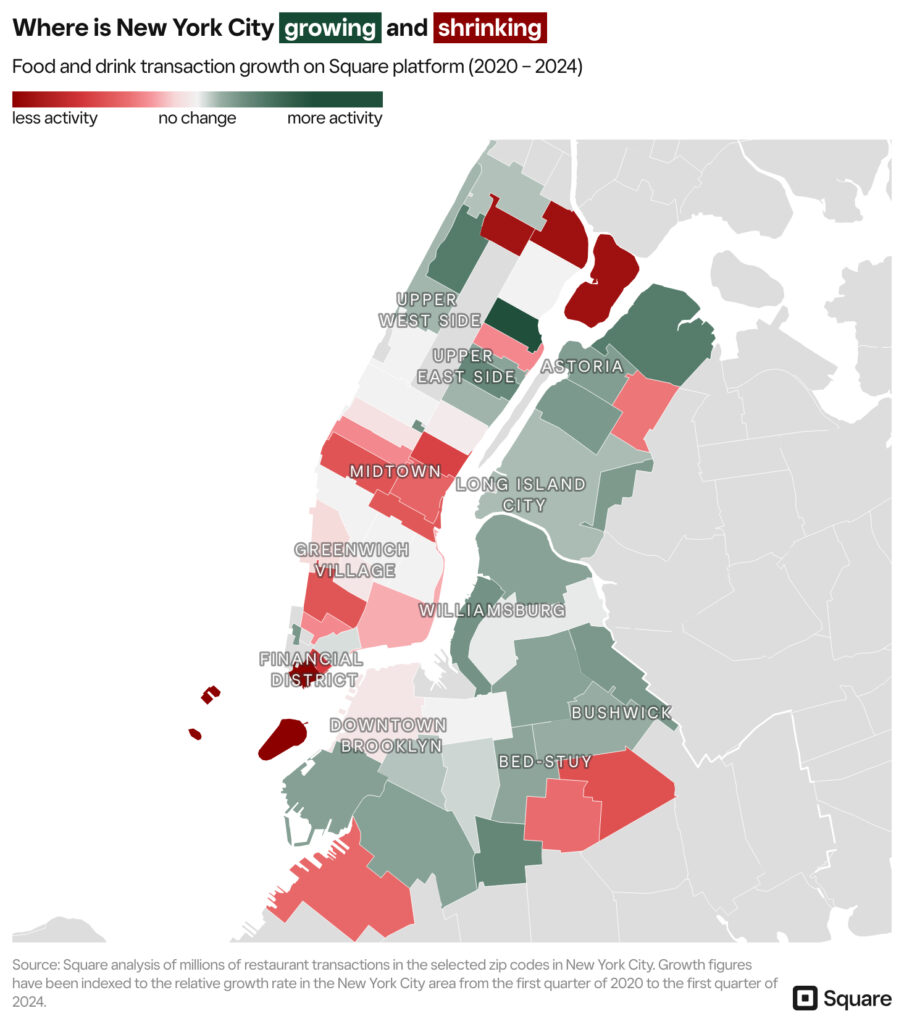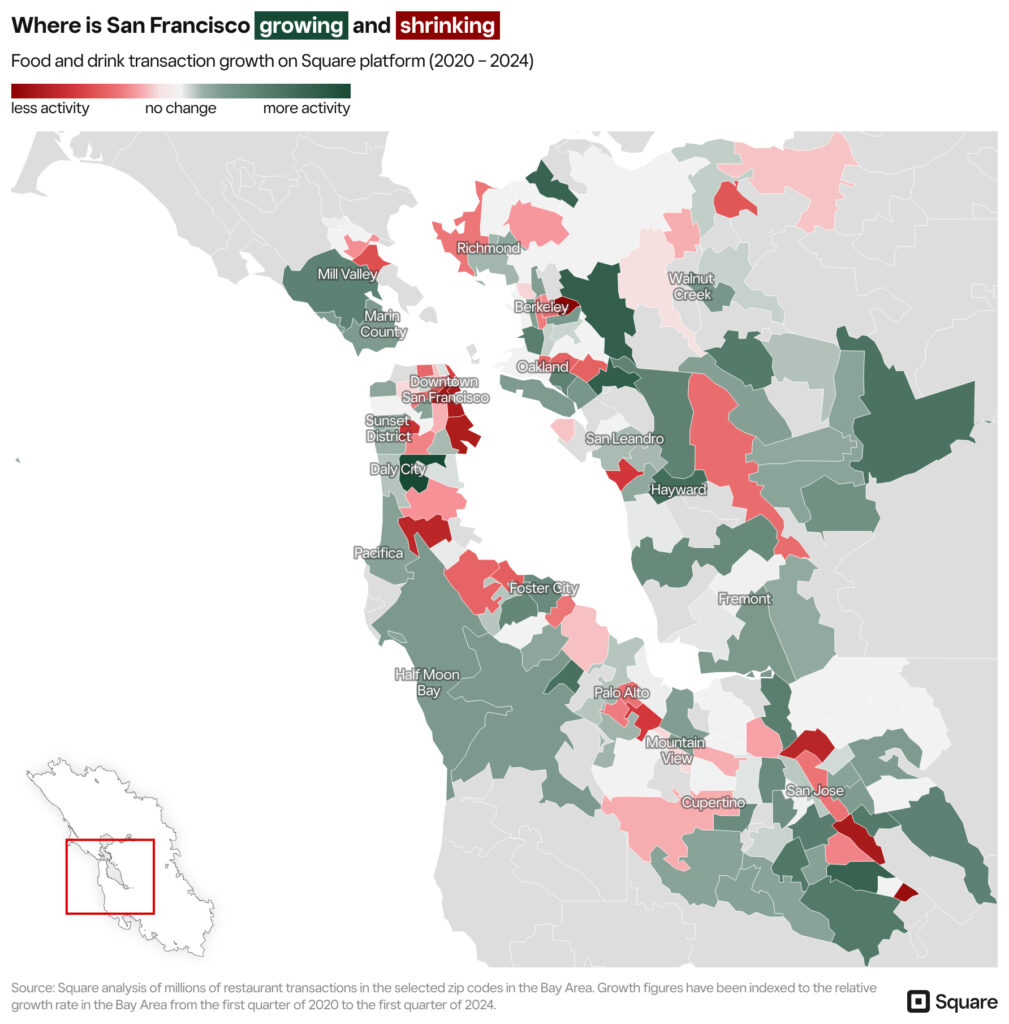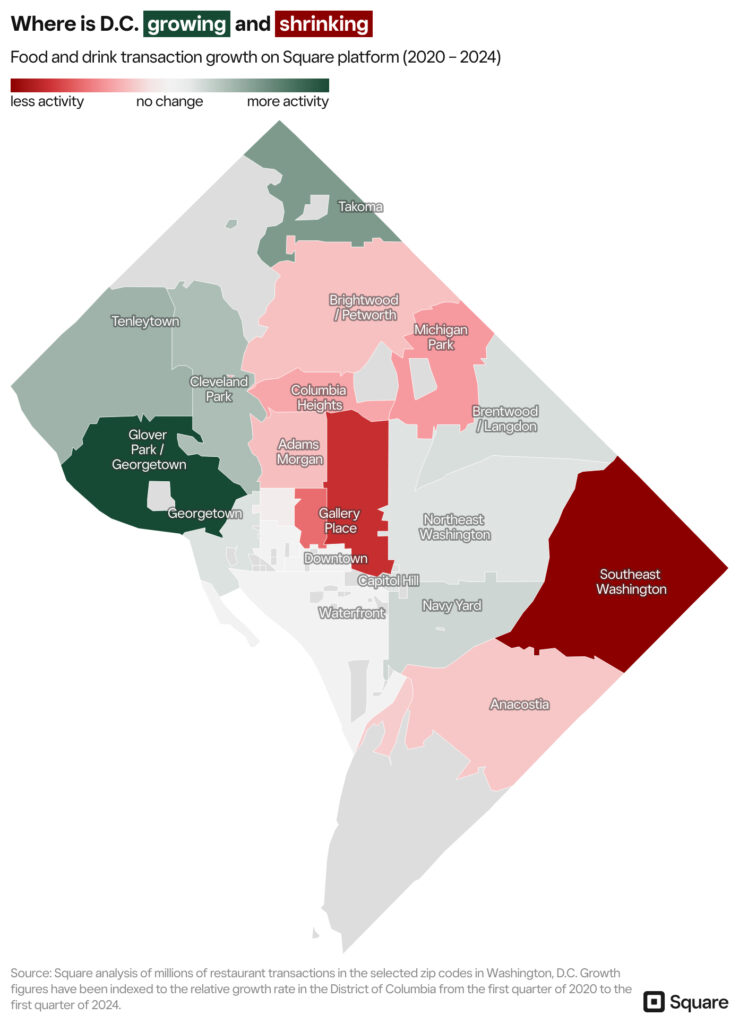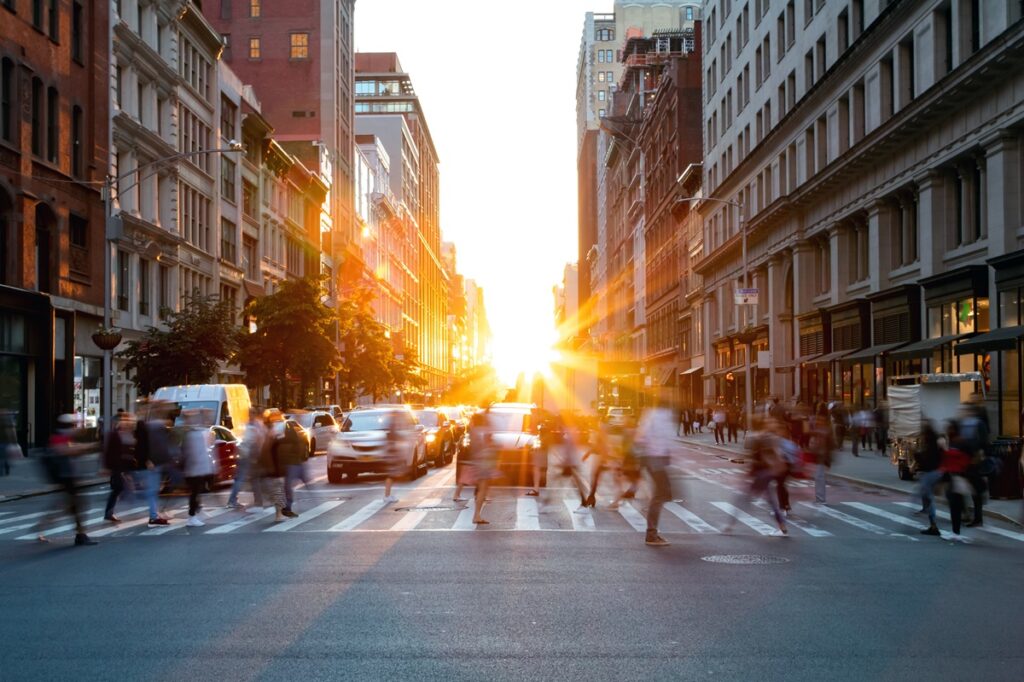Downtowns were hit pretty hard during the pandemic: the “Great Reshuffle,” remote and hybrid work, and rising cost of living all contributed to a loss of economic activity. But a new study by Square shows that local economies are starting to thrive, fueled by neighborhoods and suburbs outside the city center.
Square analyzed food and beverage transactions in Q1 2020 versus Q1 2024 in New York, San Francisco, and Washington, D.C. to uncover where consumers have shifted their spending across these metropolitans.
“The clearest finding we can show today is that American cities are strong, alive, and growing. Some parts of cities, downtown areas indexed to office workers in particular, have struggled,” said Ara Kharazian, Square Research Lead. “However, our national conversation misses the fact that other neighborhoods have flourished, and our findings show the small business environment is healthy, resilient, and strong.”
New York City
- There were significant declines in activity in areas with a high density of commercial real estate indexing toward office workers, such as Midtown Manhattan and the Financial District, while a more moderate decline in Downtown Brooklyn.
- Some areas of Brooklyn (e.g., Williamsburg, Bushwick, and Bed-Stuy) are rebounding, with activity levels up 20-60% since Q1 2020.
- Areas which have seen increased development and housing construction in recent years—such as Queens, Long Island City, and especially Astoria—have seen activity levels grow between 30%-60% since 2020.
- Some of the most expensive neighborhoods in Manhattan, such as Greenwich Village and the West Village, remain almost unchanged from pre-pandemic.

San Francisco Bay Area
- Downtown restaurant transactions in the Financial District and SoMa have declined due to the slow return to work, while Mission Bay and the Embarcadero have seen growth with new attractions and the return of tourism.
- Residential areas outside of downtown—such as Pacific Heights, Outer Richmond, and the Castro—are heating up as residents are now frequenting their local neighborhood establishments.
- Meanwhile, substantial increases were seen in the north (Mill Valley and Marin County), while in the south Daly City and parts of San Jose County saw gains.
- Urban flight caused increased traffic in East Bay restaurants in Contra Costa County, Danville, and Castro Valley.

Washington, D.C.
- Neighborhoods which have seen increased housing development are showing significant gains in restaurant activity, such as Navy Yard and NoMa, as well as parts of Glover Park and Tenleytown.
- On the other hand, the Capital One Arena area, Columbia Heights, and surrounding areas all have seen a decline in activity.
- The National Mall and tourism sites are still flat, helping support downtown businesses, while significant declines in activity were observed east of the Potomac River.

Click here for information on Square’s report on post-pandemic metropolitan growth.






